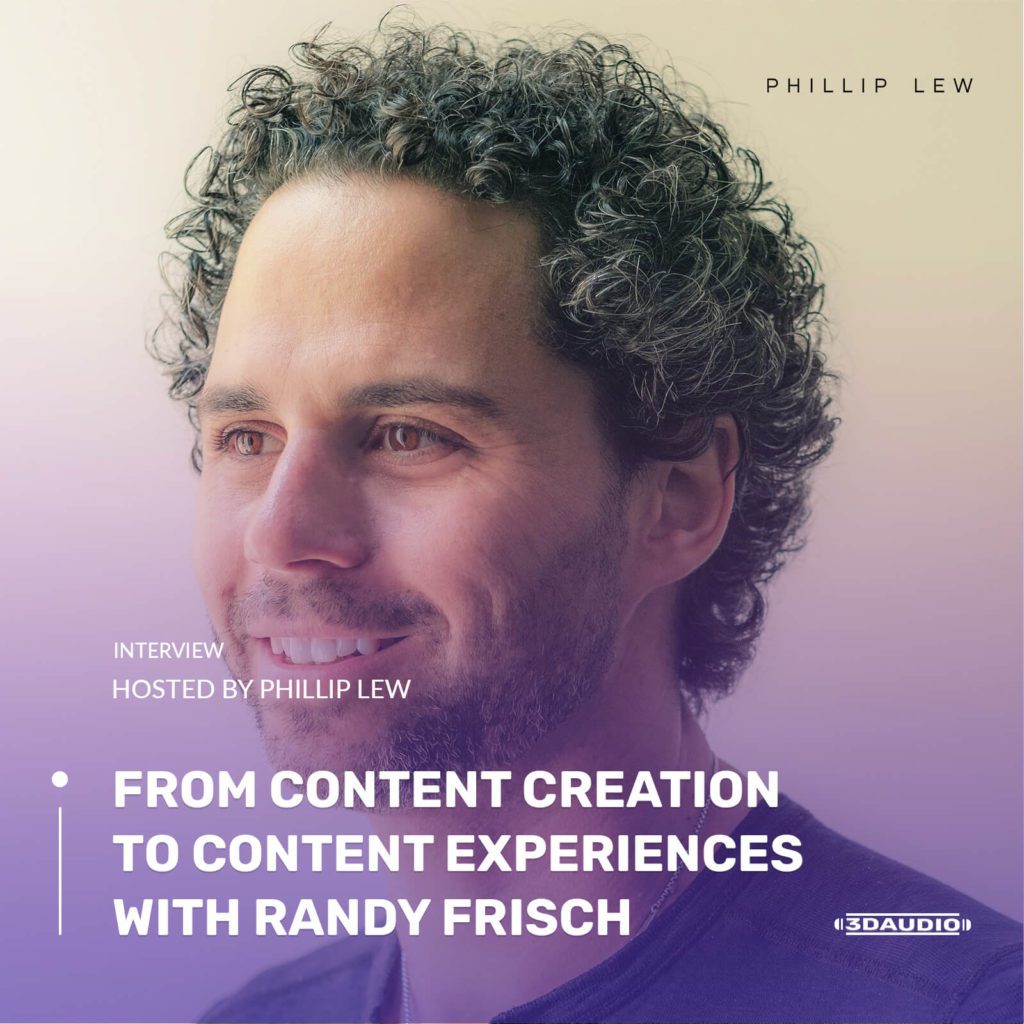
00:00
Paused.
Book Phillip to speak at your next event!
From Content Creation to Content Experience with Randy Frisch
PHILLIP
Marketers, it would seem, are on a path of being asked to create better quality content for less in order to capture new customers and audiences.
And as consumers, I think we can all agree that this is a good thing. We went from an era where companies would spam us with salesy and low value content, to an era where content has become more meaningful and useful in our daily lives. But in the classic case of consumerism, our thirst for more always seems to grow, and at a pace that’s accelerating. I believe that the next stage in the evolution of content marketing will be the creation by marketers of compelling content experiences.
Experiences that focus on making the right information at the right time available to the user. Experiences that feel frictionless, personalized, and uncomplicated. Companies that decide to offer unique content experiences to their customers over the coming years, I think, are going to see exponential returns on their investments. So, to help us better understand what content experience actually means and the incredible impact that’s going to have on the future of digital marketing, I’ve decided to invite Randy Frisch to the show.
Randy is the CMO and co-founder at Uberflip, a content experience platform that empowers B2B marketers to create personalized content experiences for demand generation, count-based marketing, content marketing, and sales enablement at scale. Randy is also the author of “Fuck Content Marketing: Focus on the Content Experience to Drive Demand, Revenue & Relationships.” Nice title, Randy.
I was excited to bring Randy onto the show because as a forward-thinking leader in marketing, I knew his ideas would be both insightful and relevant on our journey to the future of content marketing and content experiences. To get started, I decided to ask Randy to share his story and how he got started in the marketing industry.
RANDY
It’s kind of funny how you fast forward 30 years from that vision as a child to what I do now. In marketing, I just ended up realizing that B2B marketing is somehow as sexy as Super Bowl commercials. I have no idea how that happened, but along the way, I, you know, I committed myself to marketing. I, you know…I studied it in undergrad. I ended up… My first job was a sales and marketing role. Second one was at a product marketing role at a large consumer goods company. Went on to do my MBA, took the finance courses until I dropped out of them and did more marketing courses.
So, marketing, to me, has always been something that I’ve connected with. It makes sense. I definitely would put myself more right brain than left brain, in terms of the creativity and the messaging and things like that. But, you know, these days, you have to have a focus on both. And I think, you know, that’s a big part as we dig in today on what content experience is. It’s definitely important that we put a better experience with our content as it’s surrounded, but the reason we do that is ultimately to drive profitable customer action.
PHILLIP
RANDY
Now, the question is why? Like, why do we have to do that? Of course, they want that, but like, why is an organization? Do we have to take the time to make sure that our marketer can be in control at every step of the journey and do what they need to do? And that’s because the marketers role has really evolved, right? It’s no longer, “Okay, I’m going to update my website in January and June every year, and other than that, I’m done. I’m just, kind of, like, keeping an eye on what’s going on in the market.” I can’t even remember those days, but that used to be the mentality.
Now, we’re at a point where marketing is actually responsible for driving pipeline revenue and retention, right? I mean, that’s a very different scope than marketing’s got to generate leads, or marketing has to just, even worse, focus on just messaging. And because of that, because there is that requirement for us to connect with our audience in every step of this, to drive revenue, to drive profitable outcome, we need to be able to be mobile and agile to create these content experiences on the fly.
Hopefully, that makes sense as kind of jiving with your intro there, which I loved. To answer your actual question, like, what in the world is this term “content experience”? Why have I never heard it before? All I hear about is content marketing. I don’t know if in the early days, the idea content experience was going to be necessary. Content marketing was supposed to mean a lot more than it’s ended up being defined as. And that happens with a lot of different terms that we encounter in our professional lives, right?
We overly associate the term with what we started doing, which for content marketing was create content, right? And you said it yourself, all of a sudden, we realized we had to create content, so we created more and more content, more connected content, more personalized content. And, you know, what we saw at Uberflip in the early days when we were starting the company, this is 70 years ago, now. What we saw was, there would be a time when people figured out how to create that content. But then what, you know? What would they do with all that content? How would they put it in front of someone?
So the three buckets, if you will, that I use, and we can…I’m happy to dig into these. But the three buckets that I use to explain what a content experience is, is the idea of environment, structure, and engagement. And those three elements are really what you think about anytime you encounter content, and that’s all content experience is. It’s, what is that experience when someone encounters the content you’re trying to put in front of them?
PHILLIP
RANDY
One of them that I always joke about is, is that experience when you have to go down to your dingy, dungy basement, which isn’t the most fun place to go to. You know, when I was a kid, my mom used to have to, like, talk to me as I was going down to get the toilet paper down there. You’re like, “Yeah, just keep talking to me and I’ll make it.” The reality is though, you know, as you got older, at least, you know…I’m Canadian, so I only had to be 19 to drink. I was still living at home.
And I went down there and grabbed a beer from that basement fridge that’s sitting there. And let’s say it’s a Corona, take a sip of it. Don’t get me wrong, it tastes great, but there’s a complete difference between drinking that beer in that scary, moldy basement, versus drinking that exact same beer on the beach in Costa Rica. It just tastes better. And I don’t know if it’s the beads of sweat going down the bottle, the waves in the background, you know, the sound of the birds or whatever you’re hearing around you, or just the pure heat.
The reality is is that the Corona itself…and if you’re not a beer fan, sub a Pina Colada in here that it works as well. The taste of that drink is no different on the beach than it is in your basement. It’s the same ingredients. If you will, humoring me with the connection to our content marketing efforts, the content is often the same. It’s the surroundings. It’s everything that we do around that to get someone immersed and ready to consume. That’s this idea of environment. What do we do with visual aesthetics? What do we do with the layout of the page, the way we think about overall user experience, user interface, and design?
The second bucket, though, that we touched on there was the idea of structure. And I’ll relate this one to consumer lives too. I think one of the places that we are so amazed it’s structured today is an experience like Spotify, right? I don’t know about you, Spotify is my music app of choice. I think it’s amazing. I love that when I open it, it has this, this heading there. And I don’t know if you’ve ever noticed it before, it says, “Made for you.” It doesn’t say, “You”, it says “Randy,” or it says “Phillip,” or it says any of the people listening to this podcast.
So if anyone listening to the podcast opens up their Spotify and you go there and you’re like, “Wow, I’m one of, you know, thousands, if not hundreds of thousands, or millions of users of Spotify right now, and every one of us has this curated stream of content for us. That is personalized and that is structured. Now, the way they get there is absolutely there’s some AI, there’s some algorithms that make it possible at scale. But believe it or not, there are actual real people that work for Spotify that tag content. They organize content. They do all those things to make sure that they can structure content in meaningful ways.
And it’s no different than what companies like Netflix are doing and Amazon is doing. And that’s why, in our consumer lives, we’ve gotten used to having these personalized experiences, right, because it’s possible through, you know, the structure that’s put forward. The key there is how do we connect that thinking into what we do on our websites, in our marketing campaigns, the content being sent by sales people? And to do that, we need to make sure that we’re taking the time to structure our content in a way that people are looking for. Right?
I think what a lot of us do is we create content, right? We create blog posts, we create e-books, we masterfully put together videos that you would think are going to win an Oscar. And then we put them up on our website, or we drop them into an email campaign, and we link someone in a way that makes no sense to the end user. So one of the ways we do that is we’ll do it by format. So you go to someone’s website and all their content is organized by e-books, videos, webinars, infographics, and so on. I don’t go to people’s sites and say, “Okay, let me understand what these guys do by checking out some e-books.”
Similarly, when we go to an email that we may send out that has a piece of content, because we all drop content into our various marketing campaigns. And when someone actually sends out that asset, and they click on that asset, that could be a three-month-old asset, that could be a one-year-old asset, and that’s no problem as long as it’s still relevant. What we need to be able to do is make sure that we structure content in a logical way.
PHILLIP
RANDY
And we all know that amazing joke, which is, what’s the best place to hide something? Page 2 of a Google result, right? When your blog post is now sitting on page 5, people are not getting there. They’re not scrolling down that far on your own content. And I think that’s something that we just assume people will go searching for that content and finding the assets that you want. SEO is not enough, right? Like you said, we expect content to be put in front of us in that moment. We expect those Netflix, those Spotify experiences. We expect them in our B2C or our consumer lives as we buy. If we are buying from a business, we expect that exact same experience, and we’re not going to take the time to go search for it.
The other issue, I think, is what are we doing as an organization to surface that content for our own team? So a lot of us think about, how am I going to strictly surface content for my buyer? But what about everyone in your organization who needs to leverage content? And this is another one of those misconceptions with content marketing. We all assume that because we have invested in content marketing, these days, we actually have people who have the job title called Content Marketer.
Looking at almost every company now, they have a content marketer. The funny thing about that content marketer, though, is if you look at what their career looked like maybe before their current role, they were probably a writer. They either went to school for writing, or they maybe even worked at a media company, like a newspaper. Now, when they did that, their job and their responsibility was to create compelling content that was valuable, relevant, and consistent for their audience. Their job was not to get you to buy the newspaper. Yes to buy it, because they make great content for it, but they didn’t have to work with vendors to get content placed out in the network, like newspapers sold on shelves.
They didn’t have to figure out how to drive subscriptions and things like that. They just had to create great content. And I think too many of us expect that the content marketer is going to be the one who’s going to figure out how to get content in front of everyone that you’re trying to sell to.
The reality is we have a lot of people in our organization who are responsible for that. We have demand generation employees. We have digital marketers. We have sales reps who are leveraging content in the sales process. The problem is for most of those people, when they go to search for content, they can’t find it, right? They go to Google to find their own company’s content. And the problem with Google, as much as it finds relevant content, it finds what’s relevant over time by those who are searching, not what your company wants to put in front of your audience, right now in that moment.
So what I would argue is we shouldn’t count on our content marketers to be distributing content, to be figuring out what content to put in front of people, we should rely on them to tag content, to audit content. And if they do that, and we have, you know, content experience platforms and that, you know, Uberflip is one of them, there’s other solutions that help with this too. That if we take the time to do that, we can surface content and we can ensure that more of that content is used and it helps us connect with our audiences.
PHILLIP
RANDY
In fact, there’s stats from Gartner that say that 82% of the time spent making a buying decision in a more complex sale is done before speaking to sales. Eighty two percent. That means that there are various touch points along there that are often heavily based around content and thought leadership. There’s other things in there too. There’s peer reviews and review sites and things like that that people will check out, but content has a very important role. And even the last 18%, when they’re talking to vendors, that’s not one vendor, that’s all vendors, you can be sure that those individuals need content to help move things along, to help people understand what they’re looking for. They’re not just sitting on the phone with the sales rep all the way through to the end.
And from earlier, you kind of hit on this, this idea of the connection between the marketing journey and the post-sale journey. Just because someone’s bought from us, we’re not done. We, you know…many of us are looking at ways that we can entrench ourselves further in these organizations, that we can upsell, that if we’re more of a recurring sale that people will buy from us again at the end of that sale cycle. So there’s that need for us to map various different touch points along there. Now, you know, marketing in the ways that we track engagement have come a long way.
For those who are less familiar, a lot of companies, both B2C and B2B have invested in marketing automation platforms. That’s everything from solutions like ExactTarget, which is part of Salesforce. If you’re more in the consumer world, that’s solutions like Marketo and solutions like Eloqua, and HubSpot, and Pardot if you’re more in the B2B world. And what these systems do is act as a system of record for data points that we can continue to track.
Now, the key is that we can track those engagements and when this podcast is all about those digital touch points, what we need to think about is how do we map those back to those systems? Whether it’s content, whether it’s ads that they’re engaging with, how do we track back so that we can better understand the ideal path that someone’s going to go through before they’re ready to buy? And that, in the end, is where engagement is so important because we won’t have any touch points to track, unless we deliver a great content experience with great engagement points that get people to consume with you.
PHILLIP
RANDY
I’ll challenge you on a different thing that I think many content marketers just don’t take the time to do. When is the last time, if you’re a content marketer listening to this, or you just know your content marketing team, that they spoke to your customers, or they spoke to your future customers, the people you didn’t land along the way? Those are the things that are so important to understand what is it that they actually want to sit there and read?
I think what a lot of us do is we sit around and we try and drop this idea of a persona. And we do everything to envision that persona. We’re like, “Okay, they are female, and they’re 25 to 37. And they probably watch ‘Game of Thrones,’ and we know this person. And now, we’ve pinpointed this person and we are going to write a whole bunch of content tied to ‘Game of Thrones,’ because that’s going to get them. We’re going to tie what we do to season 3 of ‘Game of Thrones,’ and they will buy from us,” right? I mean, it doesn’t work that way.
Sometimes it’s cute and sometimes we’ll get a click or two, but take the time to get on the phone and understand what your buyers are looking for. And get to the point where you start to get more personalized with that content. It was interesting. I was on a road trip recently. We’re doing a bunch of roadshow tours with a conference that we do at our company. And we had one of our customers do a case study, and what he pointed to… First of all, they’ve achieved unicorn status. They’re doing things right, okay? And he said that 50% of their content that’s engaged in now is coming from account-based marketing strategies.
So, account-based marketing is the idea of instead of I’m going to create content for everyone, I’m going to deliver content in a more one-to-one or one-to-few approach. Meaning, if I want to go and land Coca Cola as a customer, I’m going to take some strategies, including curating content that I’m going to put specifically in front of them. And the reality is that 50% of the engagement in content is coming through engaging with 1200 accounts. When we look at that… And if I told you, “I read a piece of content and only 1200 people engaged in it,” or, you know, maybe only 300 people engaged in it, you may say to yourself, “Well, that’s not really impressive.”
But sometimes, that’s all we need. You know, we’re not media companies. We’re not trying to necessarily get mass adoption in all cases. We just may be trying to grow our business. So, getting the right content in front of the right people is truly the key to understanding how we’re going to engage in with people and how we’re going to drive better outcomes. So that was the first part that I used to say in terms of your question on how do I rethink the content that we’re putting in front of people? Figure out who you’re writing for and actually speak to them.
The other thing is make sure you have a content experience platform that will allow you to track that engagement, right? And you should be tracking either in that system itself or back into your marketing automation platform, and if you do that, you’ll start to be able to timeline out, to see those various touch points. You know, there’s great systems out there, like Visible [SP], which is part of Adobe now, which will help you see those multi-touch attribution points so that you can map and better understand what content was working. And that allows us to go back to figure out what content we should create next.
So, that idea of speaking to people in a more proactive way and then using the data to see what they’re engaging with, I think, is the key to creating better content.
PHILLIP
RANDY
When they were telling this story to my own marketing team, and my demand generation marketers were sitting there laughing because they knew they were being described right there and then. But it was at a time when that job title didn’t exist, right? Today, most of us can’t imagine not having someone to oversee demand generation in our organization. There was a time when we wouldn’t believe that we wouldn’t have people creating content inside of our organization. Like, you know, imagine just outsourcing all that right now. It feels like that message is so core to what you do.
The next evolution is who is going to be the one to own and tie all these experiences together? And that’s someone who’s not purely a content creator, but someone who essentially is going to be there to orchestrate those various steps. Now, it’s pretty bold to go into your CMO or your CEO tomorrow and say, “Listen, we need a new job title,” you know. That often doesn’t sit well. So I often say baby steps. First step is put together your task force. Figure out who cares about this. You probably have someone on the demand generation team who does care. Get them involved. Someone on the digital marketing team who’s frustrated with the dependencies that they need to have on a web team sitting outside of the marketing org.
Find someone on the sales team who’s frustrated that they’re not sending more compelling, engaging content over, and create that task force and start to test some of the strategies that we’ve discussed today, some of the things that you’ll find online. We write a lot about this at hub.uberflip.com, which is where we share a lot of our content. But once you do that and once you start to get traction, the job title that we’ve actually seen people engaging very often is a content experience manager.
We actually have a director level individual who oversees content experience on our team, too. So, we have two individuals who are focused on content experience, one at the director level, and they work very closely with, you know, some of the other directors on our team who oversee demand generation, who oversee account-based marketing, and other areas within the org. Ultimately, you need someone who’s going to champion this, but sometimes, that happens through committees.
Now, we’re not the be-all, end-all. It’s not, “Buy Uberflip and all of your problems go away.” It wasn’t that way with marketing automation, too, right? I actually hate that term, “marketing automation,” because we think that it’s automated and we don’t have to do anything. We are a system that allows you to take all of your content, ingest it, and create these personalized content experiences. But that doesn’t also happen magically, it happens because we give you the tools to tag and organize all the content that you have, right? So, essentially, doing content audits, and they’ll organize all that content in the back end.
So there’s this element of content organization that happens after we centralize. Then you have the ability to personalize that content inside of Uberflip. When you personalize content, what we mean by that is actually creating front-facing digital experiences. It could be a landing page of content for an account. It could be a full hub of content with various different pages that you can, you know, navigate to. But the ability to do that either in a one to many, if you will, so here’s the area that we are experts on, all the way down to the account.
We talked about some of those examples of connecting, you know, in meaningful ways with accounts, you can build dedicated pages of content for Coca Cola versus Pepsi, for John Deere versus Coca Cola. You get into B2B depending on who you’re selling to. You may have different industries where the messaging and the content you’re going to use is different. The key to understand, though, and I think this is where a lot of marketers get overwhelmed is, how much content will I have to create for this? The truth is, it’s more about picking from the content that you have. And as long as you’ve taken time to organize and centralize that content, it’ll be very easy to personalize, and you’ll realize you have a lot more assets than you thought.
So that’s where we really come into play and we are often working closely with a combination of demand generation team, the digital marketing team. Content marketers love us because their content gets used. And that’s ultimately the book I wrote. I’ll let you bleep this out if you’re not comfortable with it afterwards in your editing, but…
PHILLIP
RANDY
They can also go to my personal website, which is b-rand.com, so it sounds like brand, but with a dash in there because people call me Rand and not Randy. Those are two great places to find your way to the book.
PHILLIP
Thanks for joining me for another interview segment of Innovators, where your future is now. Randy’s company can be found on his website, uberflip.com, and his book, “Fuck Content Marketing” on amazon.com. And, of course, you can listen to the full unedited version of this transcript on our website as c9digital.com. Thanks for joining me again, your host, as always, Philip Lew, as we take you, the listener, on a journey from panic to power.
OTHER PODCAST EPISODES WE THINK YOU’LL LOVE

About Phillip lew
Phillip Lew is the host of Innovators, a podcast audio experience that decodes the mysteries of exponential technology and the coming singularity. Phillip Lew is also the CEO of C9 Staff—the #1 firm specializing in deploying remote staffing teams for clients across 9 core industries.



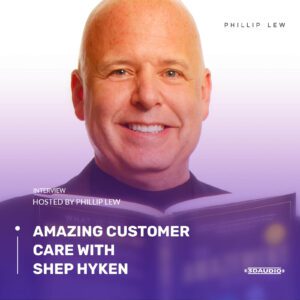
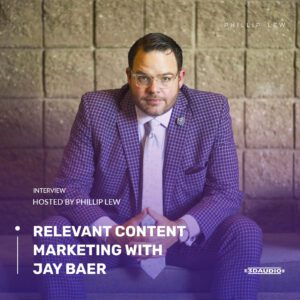


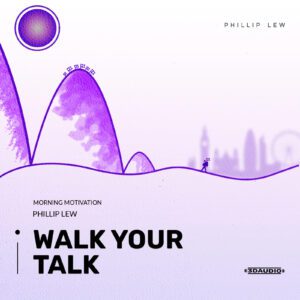
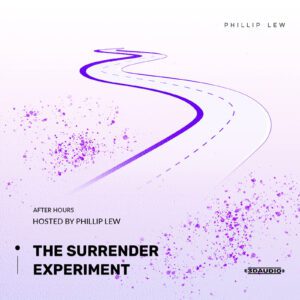
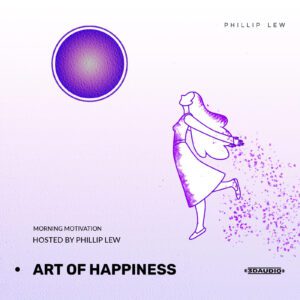

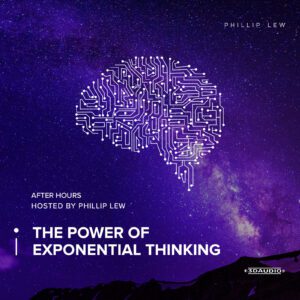
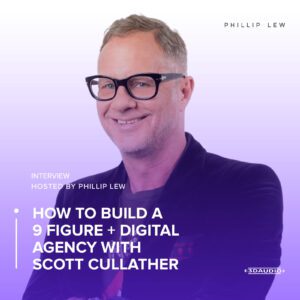

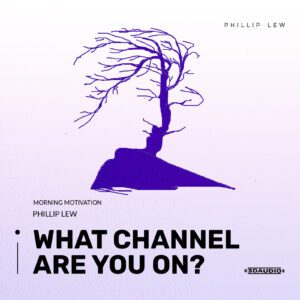
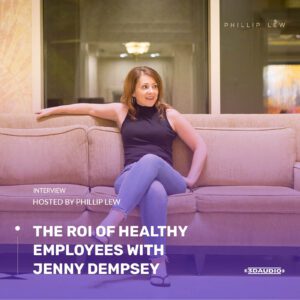
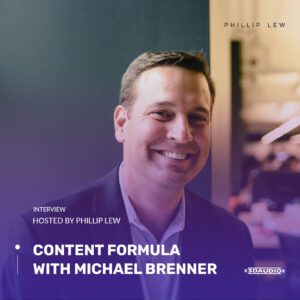
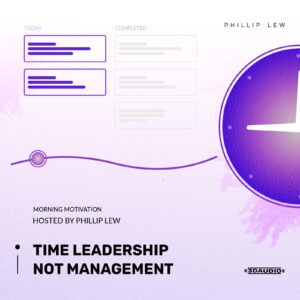
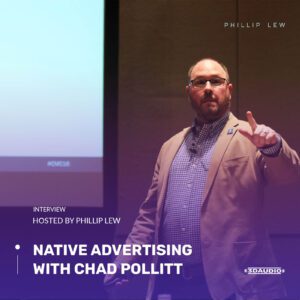
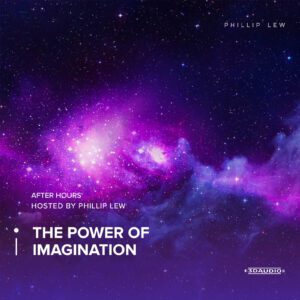
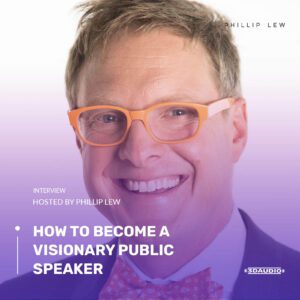
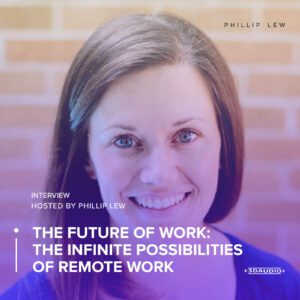
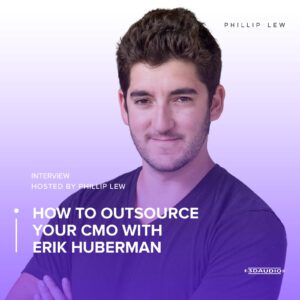

0 Comments